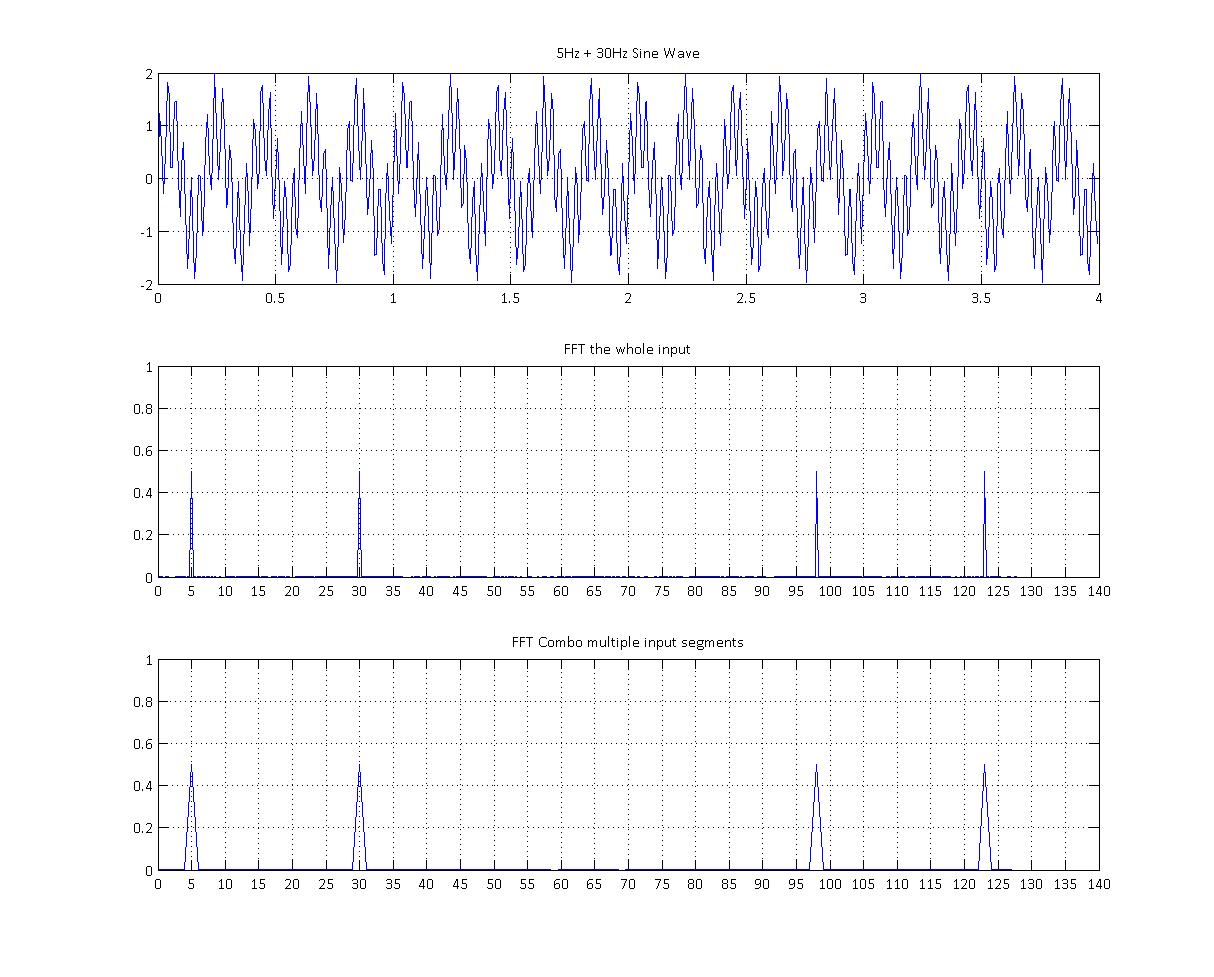suppose I have a 4 seconds signal captured at $f_s$ = 1024Hz, which gives 4,096 data array. What is the different between these 2 FFT methods (MATLAB code)
[1] FFT the entire input with 4096-points FFT
N = length(input);
Y = fft(input)/N;
[2] Divide the input into 8 segments (4096/8=512 data point each), and feed each segment to 512-points FFT, and then average the output:
N = length(input);
Y = zeros(1,512);
for i = 1:8
segment = input(512*(i-0)+1 : 512*i);
Y = Y + abs(fft(segment,512))/512/8;
end
Question #1: Are these 2 methods equivalent?
Question #2: Is the frequency resolution for both methods equal to $\frac{f_s}{N}$ = 0.25Hz per bin?

